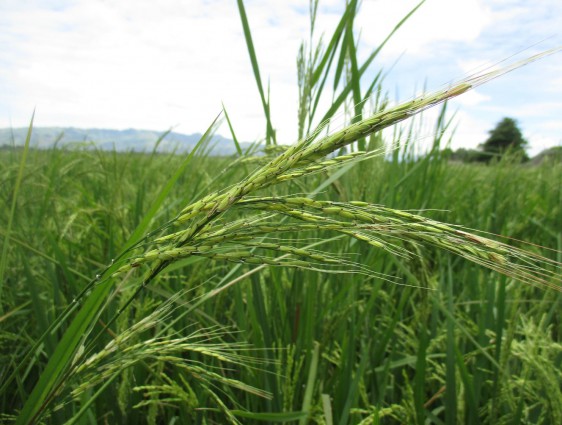In a study conducted by a team of PhilRice’s weed science researchers, it appears that the growth and development of weedy rice are higher than cultivated rice. It also matures earlier than cultivated rice and its seedlings can survive even in adverse environmental conditions.
Weedy rice is a type of a grain-bearing weed, considered as a pest, which reduces rice yields, affects quality of rice produce and is an alternate host of rice insects, diseases, and nematodes.
“It is a product of a natural cross between wild and cultivated species of rice, and it is common in direct-seeded rice system,” explains Edwin C. Martin, team lead.
According to Martin, this type of rice competes with cultivated rice in terms of sunlight, nutrients, water, and growth space. Farmers in direct-seeded areas are more prone to this infestation.
During the 2016 dry season (DS), his team surveyed ricefields in North Cotabato, Maguindanao and Sultan Kudarat for possible occurrence of weedy rice. One of the sampling sites in Isulan, Sultan Kudarat recorded an average of 15 weedy rice panicles/ sqm, the highest across all sites.
In the literature, it is said that 15 panicles/m2 means moderate infestation with approximately 70-80% yield loss.
On the same year during wet season (WS), ricefields in Koronadal City, South Cotabato had the most number of weedy rice recorded with 23 panicles/sqm.
To compare the seed germination rate of weedy rice with a registered variety, the researchers incubated NSIC Rc222 and 21 biotypes of weedy rice seeds that were collected during 2016 WS from Central Mindanao.
On the first day after incubation (DAI), results showed that the germination rate of Rc222 (93.33%) was the highest compared to other samples. However, after 3 DAI, all weedy rice types are at 100% germination rate surpassing Rc 222’s germination rate.
Martin emphasized that in direct-seeded rice, the difference between cultivated rice and weedy rice cannot be distinguished during the vegetative stage as they are quite identical. The difference becomes obvious during the reproductive stage.
In terms of fertilizers and other inputs, weedy rice competes heavily with cultivated rice during the vegetative stage. Meanwhile, during the reproductive and maturity stages, it can also cause contamination of seeds if harvested and threshed with cultivated rice.
His team plans to continue the field surveys to further identify fields with WR because most farmers are not yet aware about WR. They also have plan to do molecular characterization of WR to further differentiate WR from Cultivated Rice in terms of molecular structure/composition or for any other similarities or differences





